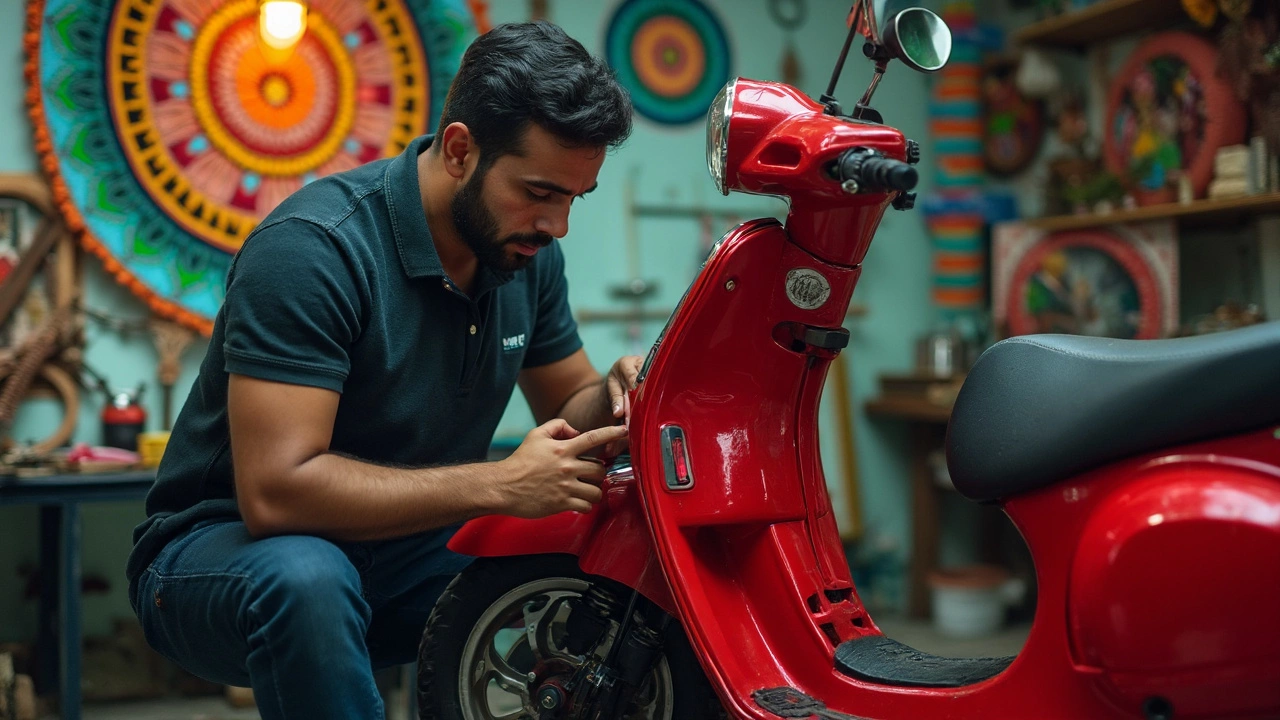Fix a Slipping Clutch Without Replacement
 Feb, 24 2025
Feb, 24 2025
Ever had that moment where your car feels like it's just not gripping the way it should? That's probably your clutch slipping. Luckily, not every slipping clutch requires a full replacement. Understanding why it happens is the first step in fixing it without breaking the bank.
Clutch slippage often starts when your clutch disc fails to engage fully. Various things can cause this, like improper adjustments or wear in the system. Before jumping to conclusions, it’s worth checking for simple fixes that you can do yourself. Sometimes, the problem is as straightforward as adjusting the clutch cable or checking the hydraulic systems.
Believe it or not, the way you drive can also contribute to clutch problems. Riding the clutch pedal or not fully engaging it can speed up wear. Adopting better driving habits could prevent future slipping, saving you time and money.
- Understanding Clutch Slippage
- Quick DIY Adjustments
- Addressing Fluid and Cable Issues
- Why Proper Maintenance Matters
Understanding Clutch Slippage
So, what exactly is clutch slippage? Simply put, it's when your car's clutch fails to fully engage. This usually means that while the engine is running and transferring power, your clutch isn't gripping the flywheel as it should. Ever felt your engine racing while your wheels aren't moving faster? That's a classic sign of slippage.
One of the primary culprits is wear and tear. Over time, the friction materials in the clutch disk can wear down. This reduces its ability to hold the engine's power effectively. Other common issues can be traced back to problems like cable misalignment or hydraulic failure.
Common Causes and Effects
- Wear and Tear: As materials wear out, the clutch loses its grip.
- Heat Buildup: Excessive heat from continuous slipping can cause more damage.
- Hydraulic Leaks: A leak can lead to pressure loss, affecting clutch function.
It's also worth noting that a slipping clutch isn't just a minor annoyance. If left unchecked, it can lead to costly repairs. Therefore, understanding its causes and signs can be crucial.
Statistics on Clutch Failure
Recent studies suggest that around 20% of clutch issues are due to improper adjustments, while another 15% result from fluid leaks. Keeping an eye on such details can preempt larger mechanical failures and chaotic mornings when your car refuses to cooperate.
Quick DIY Adjustments
Got a slipping clutch? Before you rush to the nearest mechanic, there are a couple of quick DIY adjustments you can try to fix it yourself. These don't require much more than basic tools and a little patience, and you might find they make all the difference.
Check and Adjust the Clutch Cable
In many vehicles, especially older models, the clutch is cable-operated. Over time, these cables can stretch, causing the clutch to slip. Here's what you can do:
- Locate the clutch cable adjustment point. This is typically found under the hood near the firewall or sometimes at the clutch pedal itself.
- Adjust the tension. Turn the adjuster nut to increase or decrease the tension. A properly adjusted cable will have just a little bit of free play at the pedal before you feel resistance.
- Test the clutch. Start the car and go for a short drive to see if the slipping has stopped. If not, you might need to revisit the adjustment.
Inspect Hydraulic Clutch Systems
If your car has a hydraulic clutch system, a slipping clutch could be due to low fluid levels or a leak. Here's what you should do:
- Check the fluid level. Locate the clutch master cylinder reservoir and ensure it's filled to the correct level with the specified clutch fluid.
- Inspect for leaks. Look for fluid near the clutch pedal or under the car, which can indicate a leakage from the master or slave cylinder.
- Bleed the system if necessary. Air in the hydraulic system can also cause slippage, so bleeding the clutch might be needed to remove air pockets.
It's amazing what some simple tweaks can do to a clutch system. By addressing these common issues, you not only potentially fix the slipping but also extend the life of your clutch without having to replace it.

Addressing Fluid and Cable Issues
Dealing with a slipping clutch is often a matter of looking in the right places, and sometimes it boils down to tackling fluid and cable issues. When was the last time you checked the hydraulic fluid in your clutch system? Low or dirty hydraulic fluid levels can easily lead to slippage.
Checking Hydraulic Fluid
Start by popping the hood and locating the clutch master cylinder, usually near the brake fluid reservoir. Once you find it, take off the cap and check the fluid level. If it's low, fill it up with the recommended clutch fluid type. If the fluid looks murky, you might need to flush and replace it altogether.
Inspecting the Clutch Cable
If your car uses a cable system instead of hydraulics, you'll want to give that clutch cable a good look. Over time, cables can stretch or even get corroded. Both conditions can cause slippage. Adjusting the cable tension can sometimes do the trick and give your clutch back its grip.
Here's how you can adjust it:
- Locate the clutch cable under the hood.
- You'll see an adjustable nut on the cable; use a wrench to adjust it.
- Tighten it slowly, testing the clutch pedal feel as you go.
- Make sure there's a slight amount of free play—too tight and you might cause other issues.
These simple checks can often save your wallet from the hit of buying a full clutch kit. Keeping an eye on your slipping clutch and addressing fluid and cable concerns can extend the life of your current setup.
Why Proper Maintenance Matters
Keeping up with your car's maintenance isn’t just about avoiding breakdowns. When it comes to the clutch system, regular check-ups are key to ensuring you don't end up with a slipping clutch. The more you understand your clutch's needs, the less likely you'll face costly repairs.
Extending Clutch Lifespan
Constant wear and tear can mean more trips to the mechanic. But regularly checking your clutch system allows it to last much longer. Simple things, like ensuring the clutch fluid isn’t low and the pedal is adjusted correctly, can significantly reduce wear. It’s like giving your car a longer lease on life.
Prevention vs. Cure
Addressing small issues before they spiral into bigger problems can save a ton of money. Suppose you're experiencing minor slippage now. In that case, it's way cheaper and easier to fix than letting it evolve into a complete clutch failure which might require a total clutch repair or replacement.
Improving Performance
A well-maintained clutch system ensures optimal performance. No one wants a car that hesitates at every traffic light or struggles on uphill climbs. Regular maintenance can keep your drive smooth and stress-free.
To sum it up, maintaining your clutch is about more than avoiding problems—it's about maximizing your car’s performance and longevity. Next time you're thinking of skipping that routine check-up, remember that a little attention now could save you a lot of trouble later.